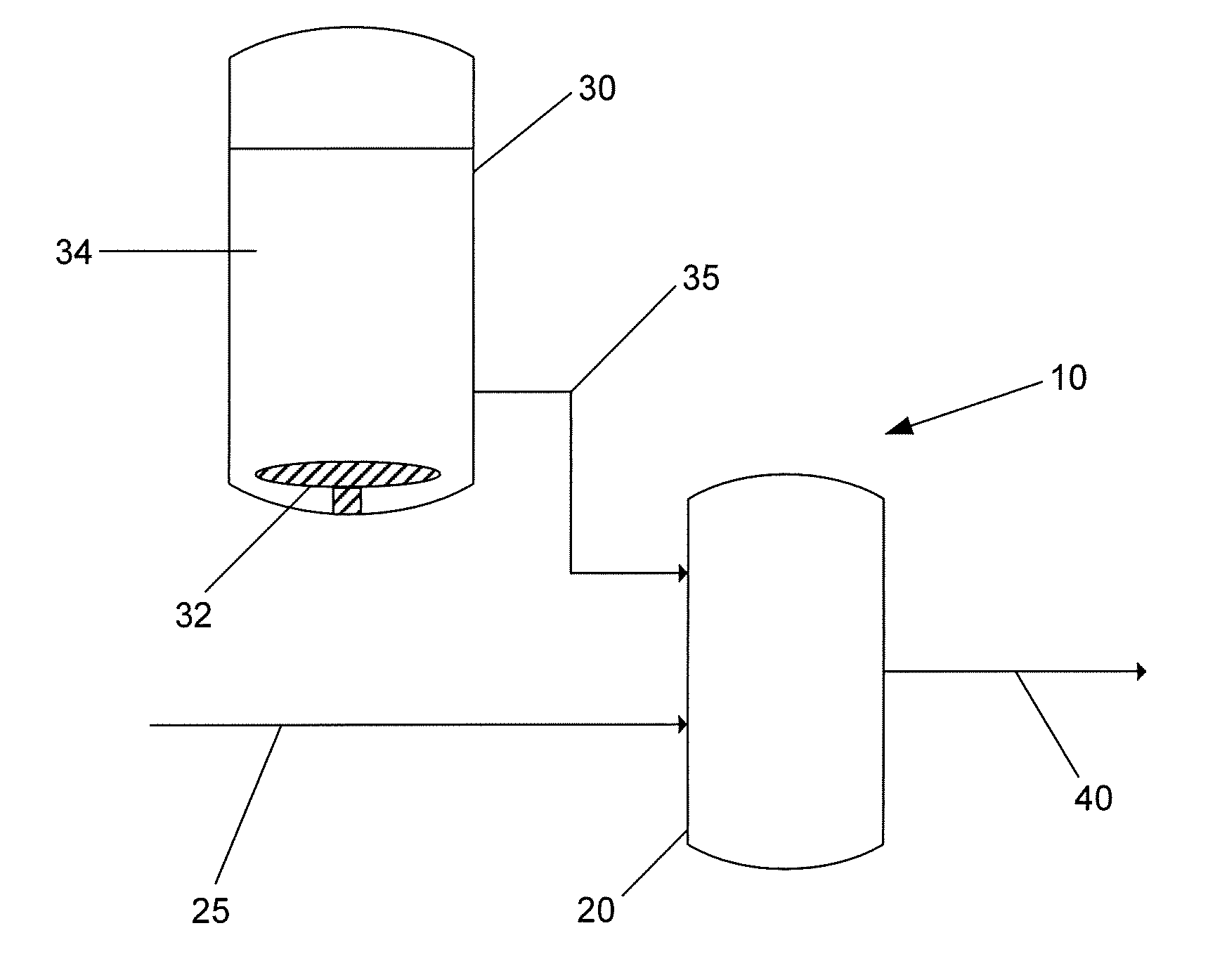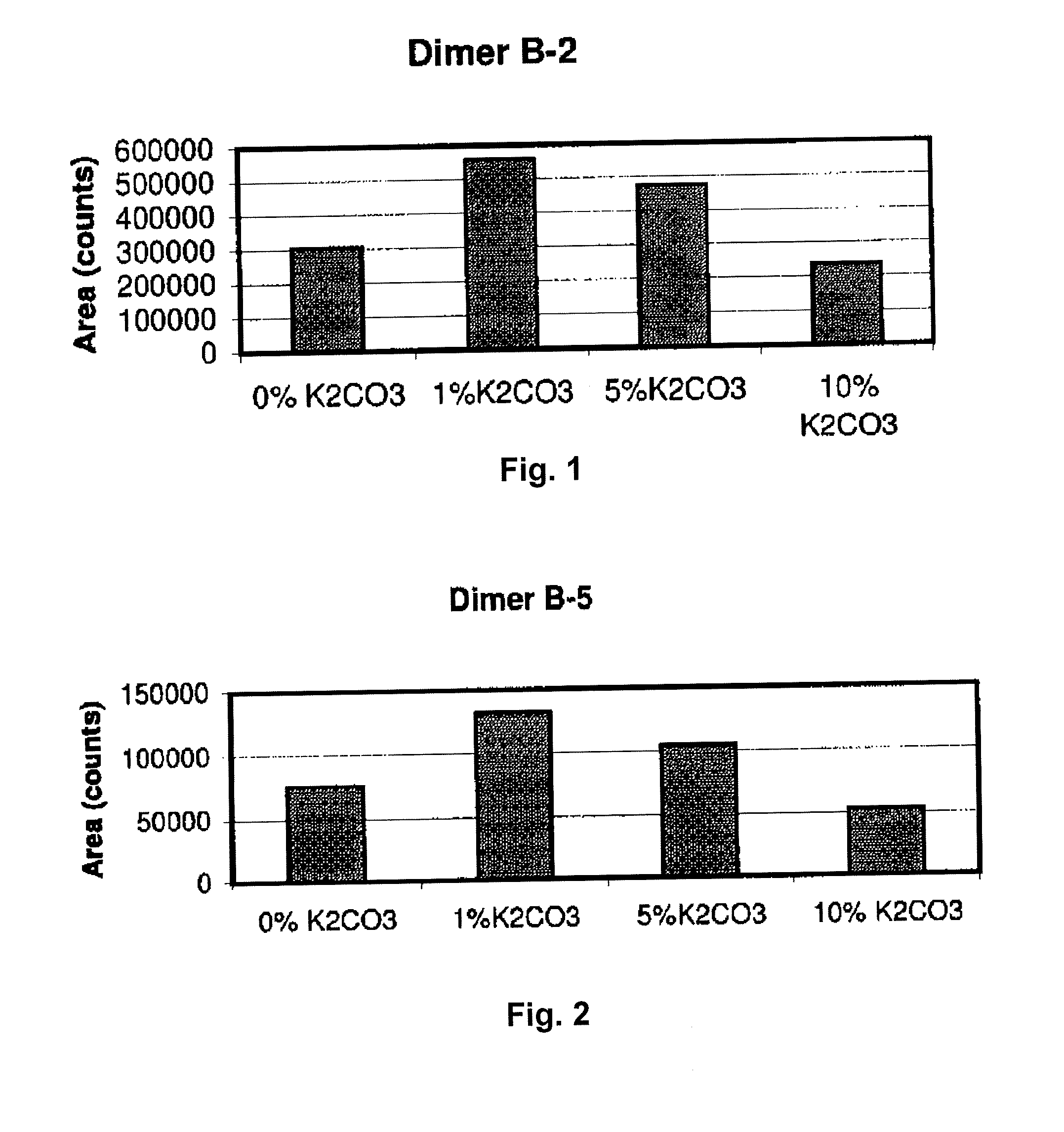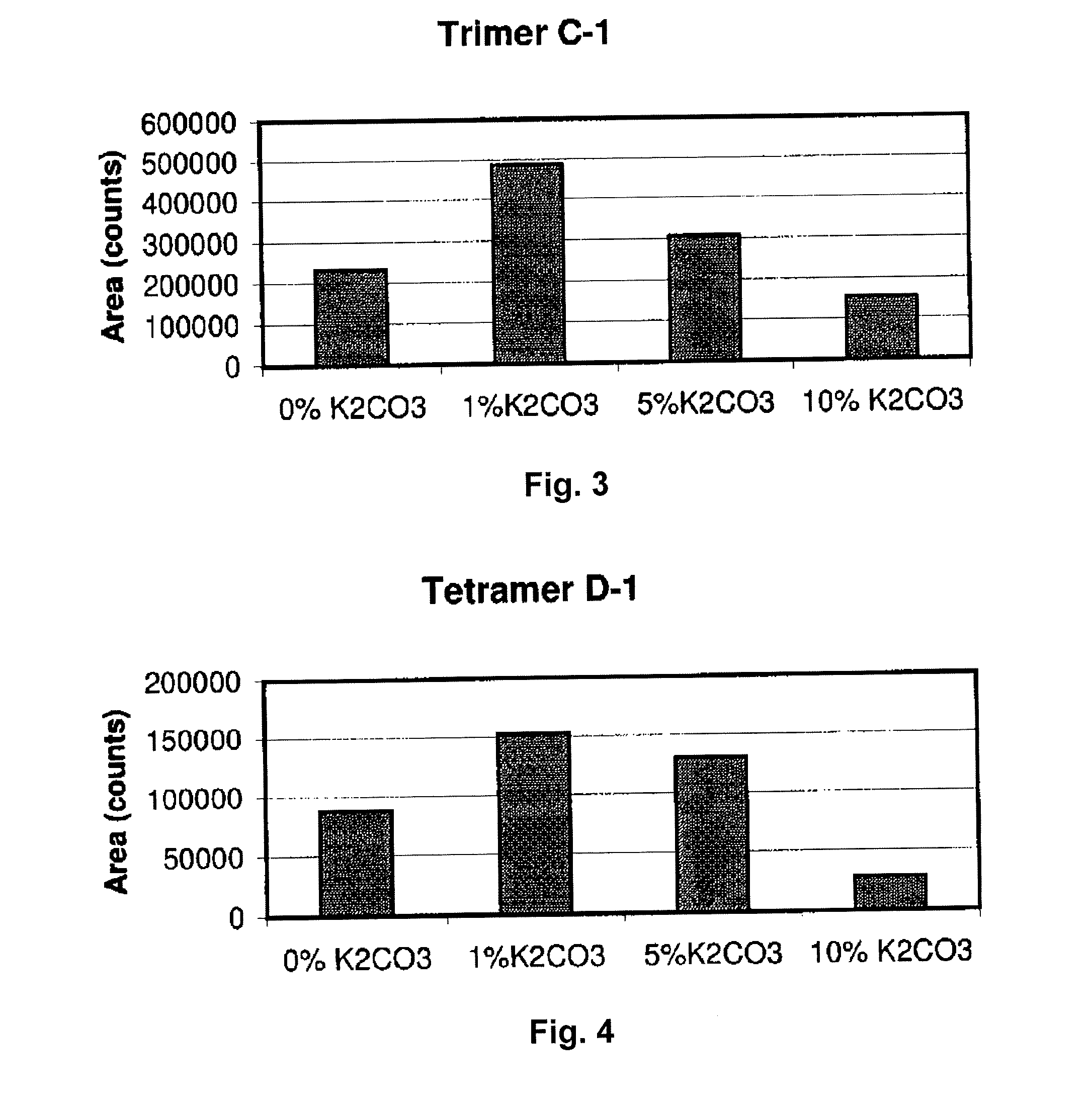Method of washing cocoa beans to improve the quality of the cocoa products obtained from such beans
- Summary
- Abstract
- Description
- Claims
- Application Information
AI Technical Summary
Benefits of technology
Problems solved by technology
Method used
Image
Examples
example 1
Preparation of Raw Cocoa Beans
[0067]Methods. Raw cocoa beans were pre-washed in a potash solution and washed with demineralized water. The concentration of the potash solution varied between 0 wt % and 10 wt %. The temperature was 70° C. during the washings. After the washing and rinsing steps, the cocoa beans were roasted, deshelled, and broken into nibs. The nibs were further processed into various cocoa products, such as cocoa liquor, cocoa butter, and cocoa powder. These cocoa products were also further analyzed, as described herein.
[0068]Equipment. A drying oven (Heraeus, type: T-5042) with circulating air was used to sterilize and prepare the pre-washed beans. A direct contact jet roaster (laboratory scale fluidized bed dryer / roaster) was used to roast the cocoa beans in a closed cabin by hot dry air at constant air pressure and temperature. Since most of the heat remains in the heating cabin, it was possible to dry or roast the product at temperatures between 80° C. and 120° ...
example 2
Effect of Pre-Washing on Cocoa Liquor and Cocoa Shells
[0083]Analyses. Analyses for pH and moisture content (or % H2O, as measured in wt %) were carried out as described in the previous Example (for cocoa liquor the Karl Fisher method was used). The fat content (Fat %) was determined according to the densitometric method. The wet sieve residue (75μ) of cocoa liquor was determined by measuring the mass percentage of the composition that does not pass through a sieve with apertures of 75 μm×75 μm. The wet sieve residue (125μ) of cocoa liquor was determined by measuring the mass percentage of the composition that does not pass through a sieve with apertures of 125 μm×125 μm. Levels of iron, aluminum, and silicon were determined in cocoa liquor.
[0084]Cocoa beans were prepared as described in Example 1. Levels of aflatoxins and ochratoxins were determined in the cocoa liquor and in the cocoa shells.
[0085]Conclusion. Table 3 shows various characteristics of the cocoa liquor for different p...
example 3
Effect of Pre-Washing on Polyphenols of the Cocoa Product
[0087]Analyses. Oligomeric polyphenols were determined by an HPLC method. The dry fat free cocoa powder from the liquor was analyzed for the presence of oligomeric polyphenols using high performance liquid chromatography (“HPLC,” type Waters 6000). The HPLC was connected with: a) Hypersil column type 5μ-C18, size: 250×4.60 mm; b) an autosampler (type Waters 717 plus); c) a photodiode array detector (type Waters 996); and d) a solvent degasser unit (type Pio Lab SDU 2006).
[0088]Conclusion. Cocoa beans were prepared as described in Example 1. Pre-washing with a potash solution did not destroy the polyphenols in the cocoa liquor, as evidenced by polyphenol levels determined from cocoa powder of the cocoa liquor. Higher levels of polyphenols were obtained with the 1 wt % and 5 wt % potash solution (see FIGS. 1-4 and Table 5). The potash solution was only in contact with the shells of the beans for a short time. Therefore, the solu...
PUM
 Login to View More
Login to View More Abstract
Description
Claims
Application Information
 Login to View More
Login to View More - R&D
- Intellectual Property
- Life Sciences
- Materials
- Tech Scout
- Unparalleled Data Quality
- Higher Quality Content
- 60% Fewer Hallucinations
Browse by: Latest US Patents, China's latest patents, Technical Efficacy Thesaurus, Application Domain, Technology Topic, Popular Technical Reports.
© 2025 PatSnap. All rights reserved.Legal|Privacy policy|Modern Slavery Act Transparency Statement|Sitemap|About US| Contact US: help@patsnap.com



